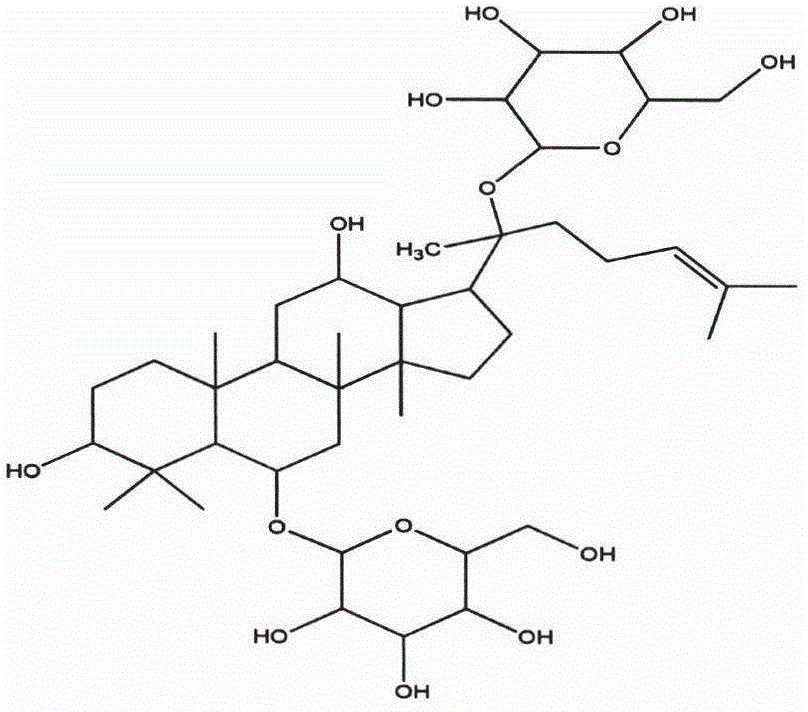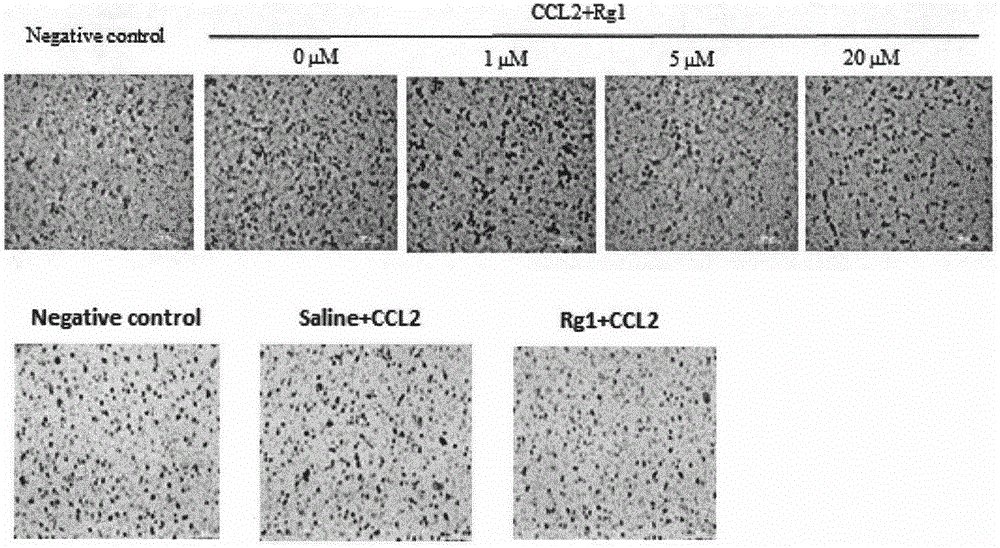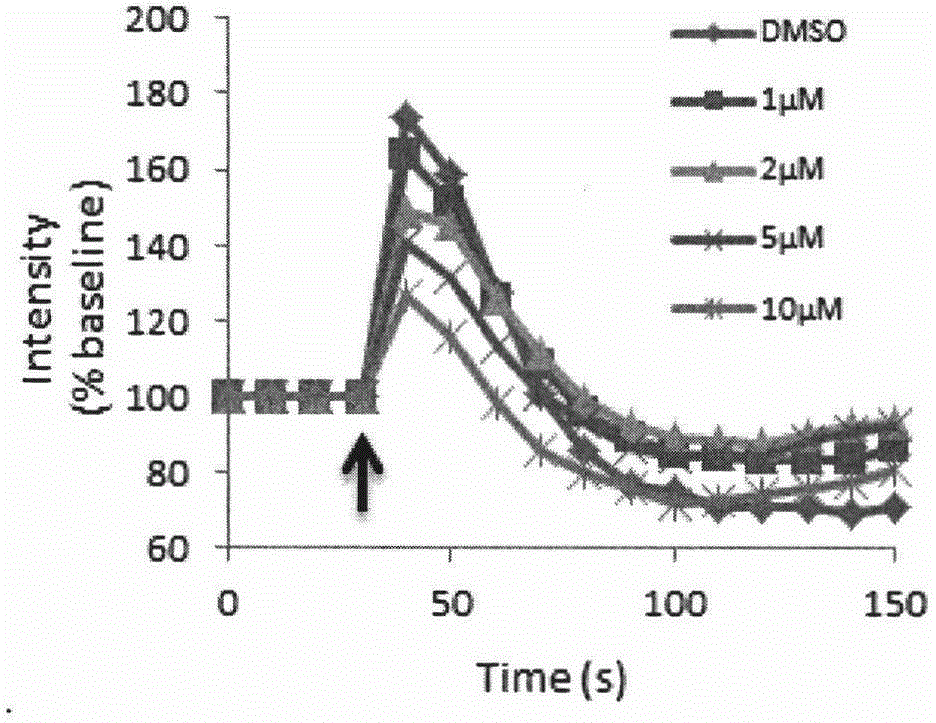Application of ginsenoside Rg1 serving as CCL2-CCR2 signaling pathway inhibitor and central anti-inflammatory drug
A technology of CCL2-CCR2 and ginsenoside, which is applied in anti-inflammatory agents, drug combinations, non-central analgesics, etc., can solve the problems of low success rate of drug development for central diseases and nervous system diseases
- Summary
- Abstract
- Description
- Claims
- Application Information
AI Technical Summary
Problems solved by technology
Method used
Image
Examples
Embodiment 1
[0024] Example 1. Ginsenoside Rg1 inhibits CCL2-induced chemotaxis of human mononuclear cells THP-1 and mouse peripheral blood mononuclear cells. The invention uses Transwell cell migration assay to investigate the antagonistic effect of ginsenoside Rg1 on the monocyte chemotaxis process induced by CCL2. Human mononuclear leukemia cells THP-1 and isolated mouse peripheral blood mononuclear cells were used respectively, and the cells were pretreated with different concentrations for 4 hours, and then CCL2 was given for a period of time. Transwell chemotaxis and migration assay followed by formaldehyde fixation, In the crystal violet staining step, observe under a microscope to observe changes in the amount of cell migration. The results showed that CCL2 could significantly increase the migration of THP-1 cells and mouse peripheral blood cells, while ginsenoside Rg1 could weaken this chemotaxis ( figure 2 ).
Embodiment 2
[0025] Example 2. Ginsenoside Rg1 effectively reduces the increase in intracellular calcium ion signal intensity induced by CCL2.
[0026] The intracellular calcium ion concentration is closely related to the activation of intracellular signaling pathways and cell migration. The invention uses a fluorescence method to measure the antagonistic effect of ginsenoside Rg1 on the increase of intracellular calcium ion signal intensity induced by CCL2. Mouse macrophages Raw267 were used to subculture and cultured in 96-well cell culture plates. When the density was 70-80%, different concentrations of Rg1 were added for 4 hours. After washing with PBS, add Fluo-4AM calcium ion fluorescent probe reagent for a period of time, then add mCCL2, and immediately read on a multi-functional microplate reader, the excitation wavelength is 488nm, and the plate reading interval is 10s. The results showed that CCL2 could rapidly increase the intracellular calcium ion signal intensity in a short t...
Embodiment 3
[0027] Example 3. Ginsenoside Rg1 significantly down-regulates the expression of CCL2-CCR2 downstream signaling pathway proteins.
[0028]The CCL2-CCR2 signaling pathway is associated with the activation of the MAPK pathway. In the present invention, Western Blot immunoblotting method is used to determine the change of ginsenoside Rgl on the level of related kinase protein downstream of CCL2-CCR2 signaling pathway. After pre-incubation with different concentrations of ginsenoside Rg1 for 4 hours, CCL2 was added. After a short period of action, the medium was quickly removed to extract the total protein of the cells. After adding the loading buffer, the total protein was separated by SDS-PAGE. Cut off the band of the target protein, transfer the target protein to PVDF membrane, incubate overnight with the antibody of the target protein respectively, wash off the unbound antibody with TSBS, and incubate the secondary antibody conjugated with horseradish peroxide. After washing ...
PUM
 Login to View More
Login to View More Abstract
Description
Claims
Application Information
 Login to View More
Login to View More - R&D Engineer
- R&D Manager
- IP Professional
- Industry Leading Data Capabilities
- Powerful AI technology
- Patent DNA Extraction
Browse by: Latest US Patents, China's latest patents, Technical Efficacy Thesaurus, Application Domain, Technology Topic, Popular Technical Reports.
© 2024 PatSnap. All rights reserved.Legal|Privacy policy|Modern Slavery Act Transparency Statement|Sitemap|About US| Contact US: help@patsnap.com










